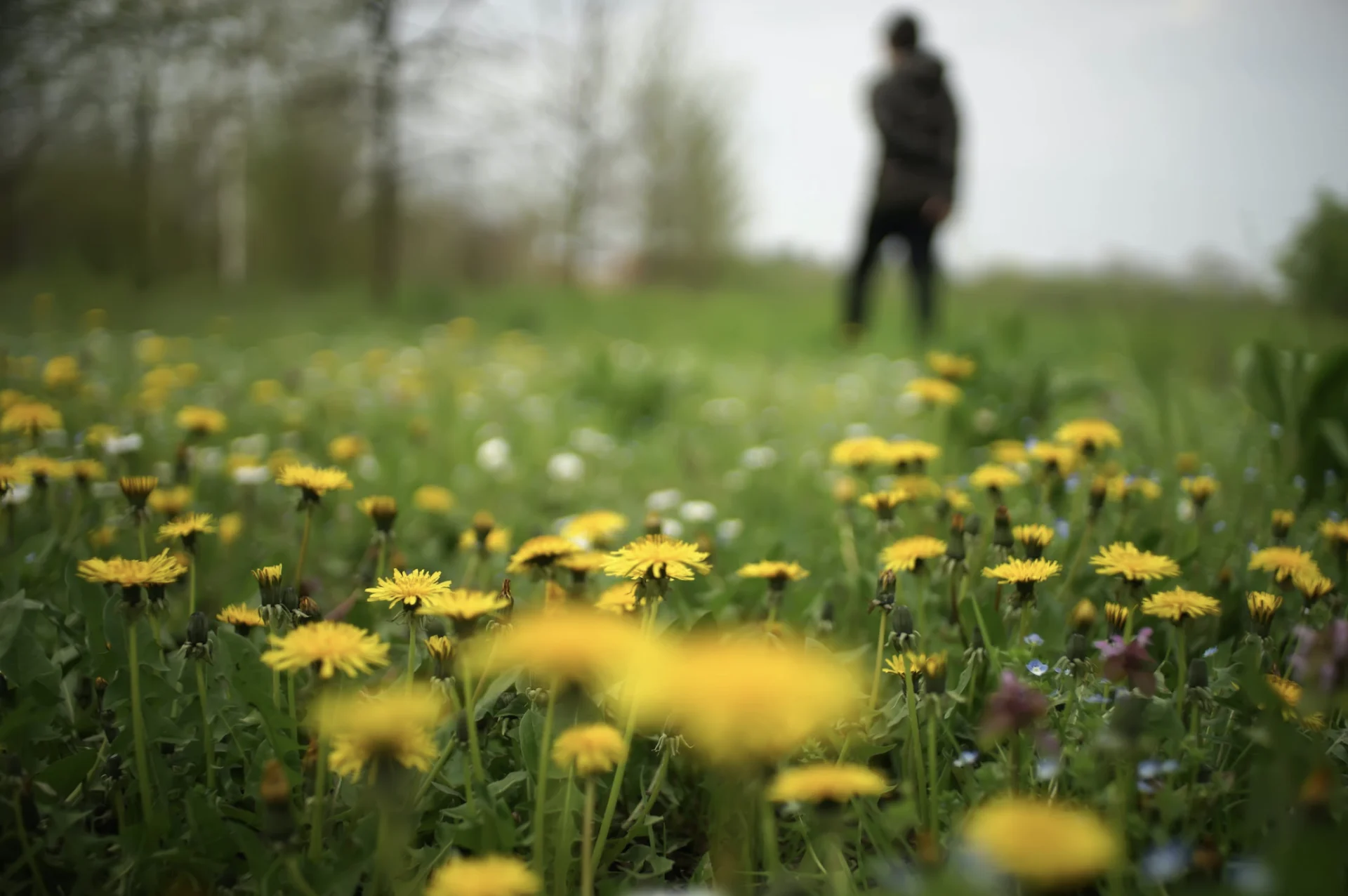
Why 'grow it and don't mow it' is an ideal spring gardening tactic
Leaving your yard untidy and planting native flowers in your garden can have tremendous benefits for pollinators this spring.
With the arrival of spring, you may now be thinking of tending to your garden or yard but you may want to hold off on that for the time being.
The Canadian Wildlife Federation (CWF)'s #GrowItDontMowIt campaign encourages the natural growth of wildflowers and native meadows to restore habitat for pollinators in decline.
SEE ALSO: Buzzing with ideas to keep pollinators and plants thriving
As part of the initiative, the group hopes to motivate roadway, rights-of-way managers and homeowners to reduce the amount of mowing and seed gardens with native wildflowers. Canada has 1.4 million kilometres of roads and 6.2 million backyards, providing a significant opportunity to enhance pollinator conservation.
Sarah Coulber, CWF education specialist, spoke to The Weather Network in 2021 on why it's recommended to hit the pause button on cleaning your yard or garden right now.
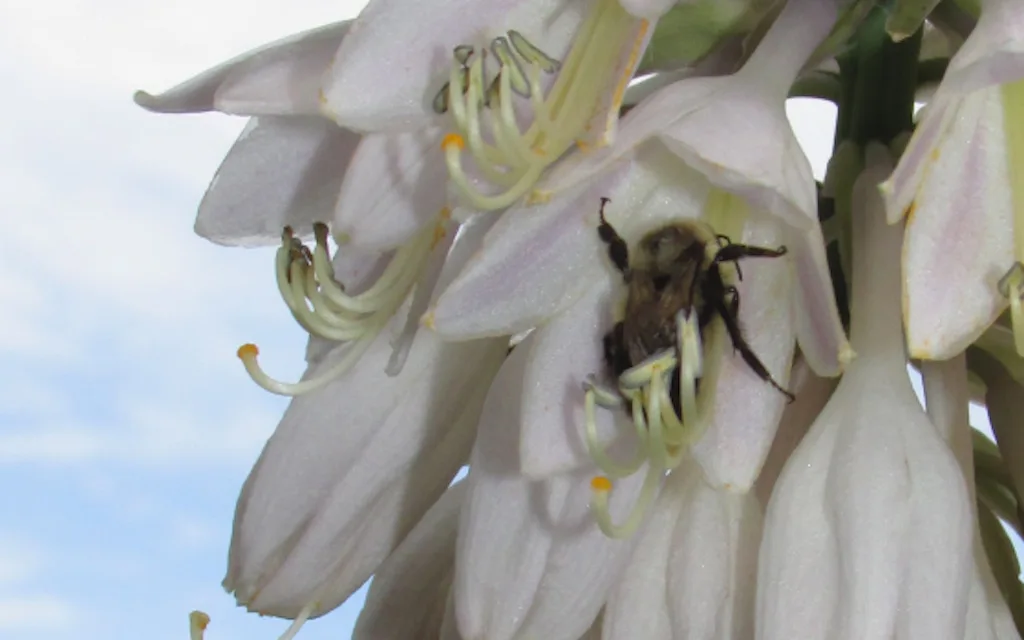
Bumblebee. (Nathan Howes).
"We're trying to help return habitat or create habitat, viable habitat for wildlife," said Coulber. "We're not preaching and pointing the finger, saying everyone has to rip up their lawn. It's looking at your lifestyle and [asking yourself], 'how much lawn do you need?'"
LEAVES SHOULD BE LEFT ON YARD OR WAIT UNTIL TEMPERATURES HIT A CERTAIN MARK
Coulber said when you’re creating habitat on your lawn, it’s best to keep the leaves on the property since nature has “evolved to use them.”
“They're there to shelter for the wildlife that co-evolved with that particular area, that tree, probably. They're also going to slowly decompose and provide nutrients to the tree roots, they can shade the roots,” said Coulber.
But if you must rake them, keep them tidy and leave them under the tree year-round, she added. If not, then you may want to consider leaving them until temperatures hit a sustained mark of 10°C for more than a week straight, according to this horticulturist.
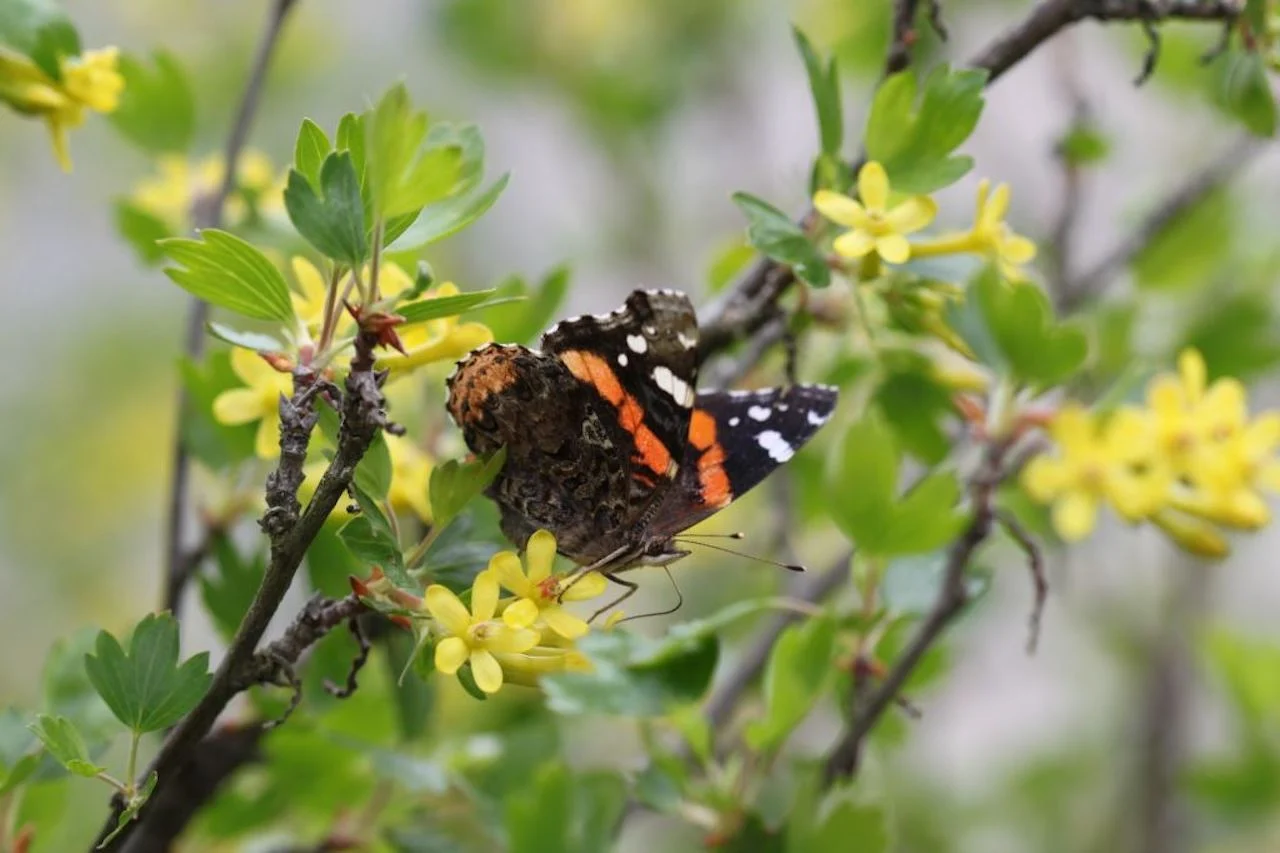
Butterfly. (Canadian Wildlife Federation)
"By then, theoretically, a lot of the beneficial insects will have moved on, but still some could be in there. So if you are going to remove (leaves), look carefully to see if there are any beneficial insects in there, in whatever form they may be in," said Coulber, urging people to put them in the compost or relocating them to another area of the yard to avoid putting in the trash.
DOS AND DON'TS IN BUYING PLANTS
With spring now here, many are thinking of buying plants to tend to their gardens. With so many varieties to choose from, what are the beneficial ones for pollinators? Coulber says there things to look for and avoid when making these purchases.
The first thing people should do, wherever possible, is buy regionally native plants because they have co-evolved with wildlife and have adapted with the weather, she said.
While it is strongly recommended to acquire native plants, the education specialist pointed out that not every single type has to be local. "Again, it is a balance," Coulber explained.
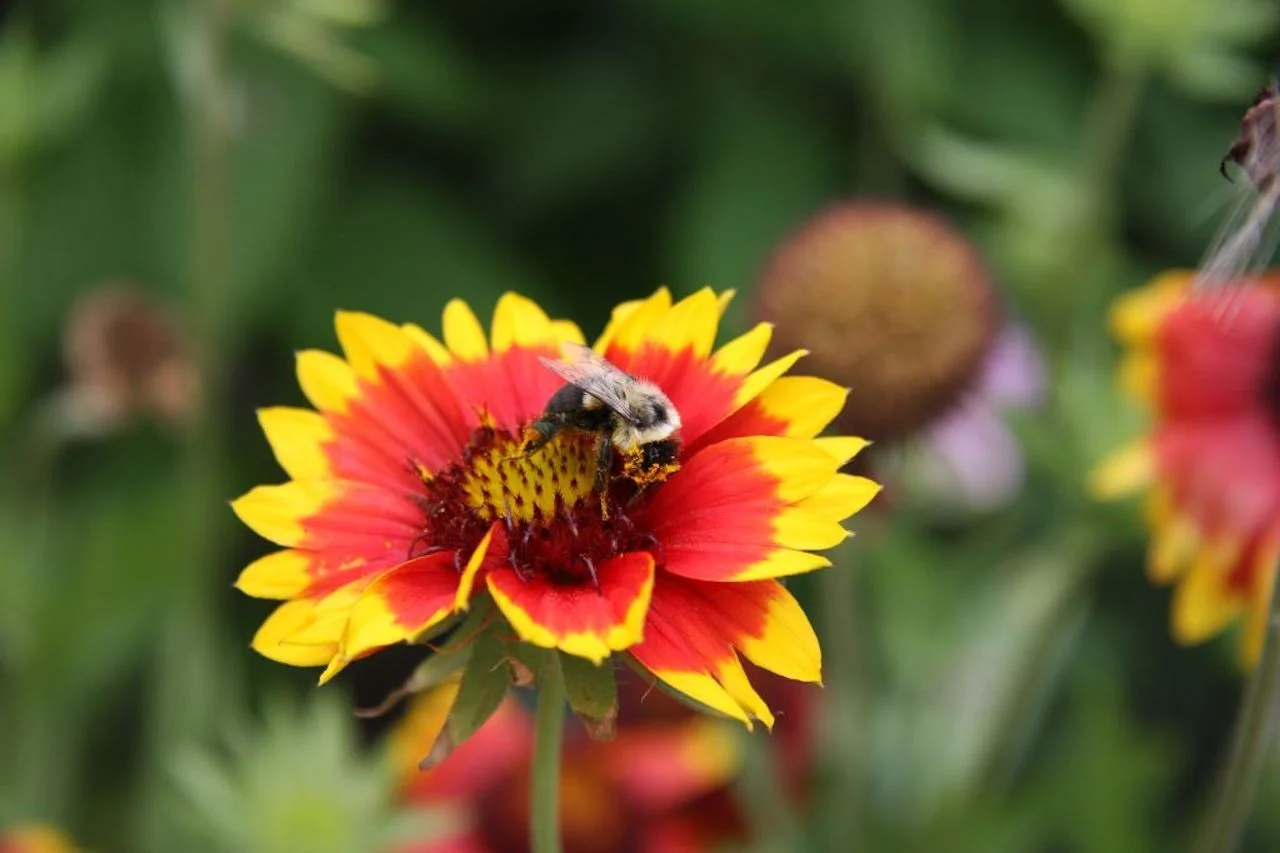
(Canadian Wildlife Federation)
"If you do go beyond that to other regular plants, just make sure they're not invasive plants that will have the potential to spread into neighbouring ecosystems, and push out the native plants that are there, which affect them, the birds, bees and the other wildlife that depend on them," said Coulber.
LOOK FOR PLANTS WITHOUT NEONICOTINOIDS
As well, she suggested look for plants that have not been treated with neonicotinoids -- a group of pesticides that are "very tenacious," Coulber warned. They can be sprayed on the seed and "stay with the plant to the point where the nectar and pollen can harm or kill our pollinators."
To help avoid this, people can go to a local nursery and inquire with staff about the source of their seeds or growth of the plants, and whether or not they've been treated with neonicotinoids.

(Canadian Wildlife Federation).
Also look for plants that have not been so over-cultivated that they no longer contain nectar and pollen, and try to obtain flowers of different shapes and sizes, colours and bloom times.
"We have so many pollinators in Canada. There's seven kinds -- bees and wasps, butterflies and moths, flies, beetles and hummingbirds. Just look at bees alone. We've got around 900 species of native bees. They're so diverse in terms of when they come out, their sizes and how they feed," said Coulber.
"So it's important to have a variety of flowers to support a variety of pollinators."
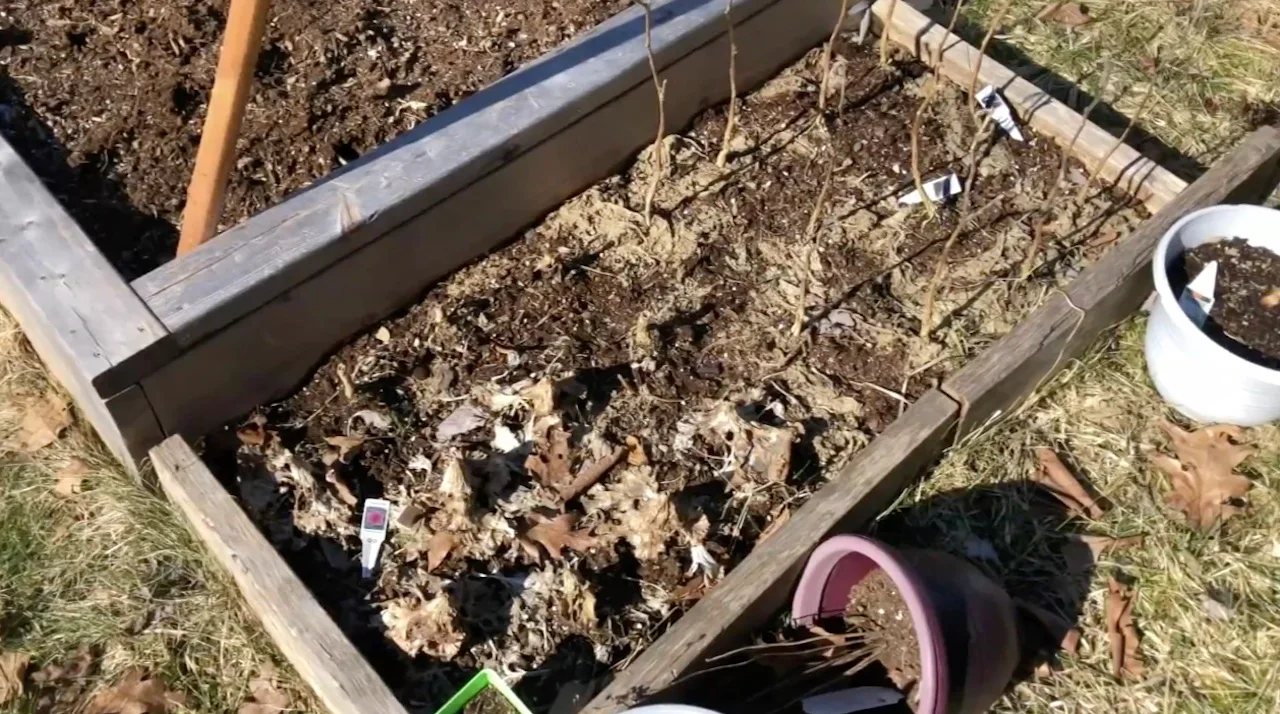
When looking to spruce up your garden, it is recommended to buy regionally native plants because they have co-evolved with wildlife and have adapted with the weather. (Nate Coleman).
HABITATS WORKING GROUP, ONLINE WORKSHOP
Earlier in 2021, the CWF launched the Canadian chapter of the Rights-of-Way as Habitat Working Group. It is a network of biologists, foresters, engineers, environmentalists, lawyers, educators, and other stakeholders interested in supporting habitat on rights-of-way and other working landscapes. More information can be found here.
Thumbnail credit: Pexels/photokip.com
Follow Nathan Howes on Twitter.
